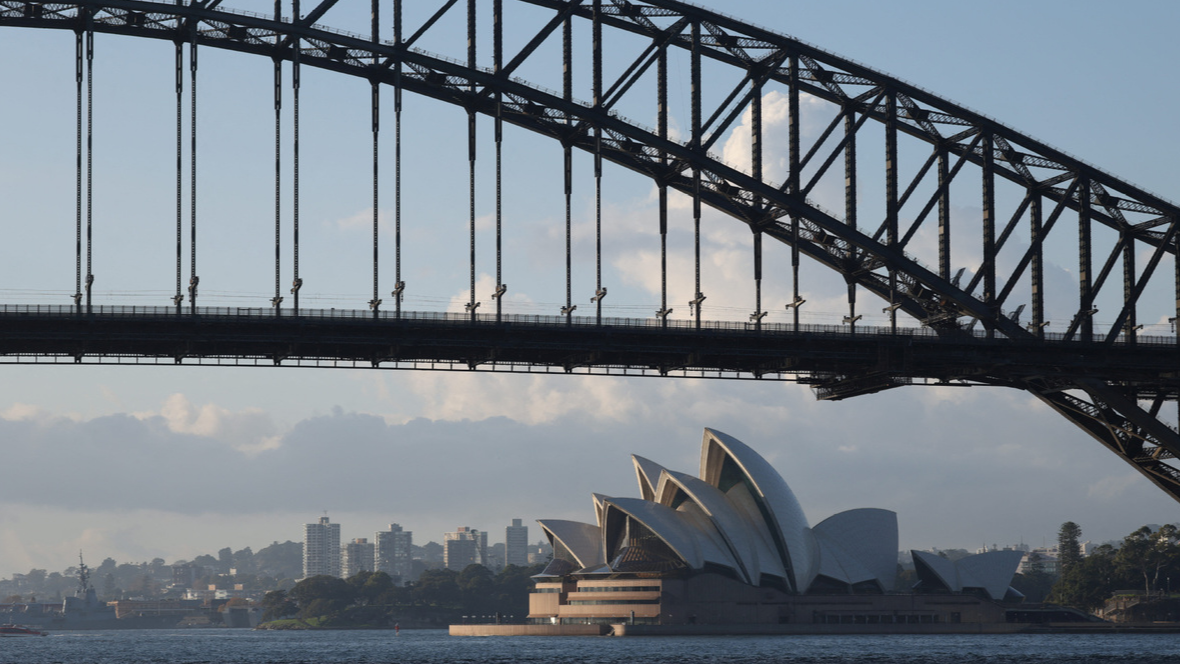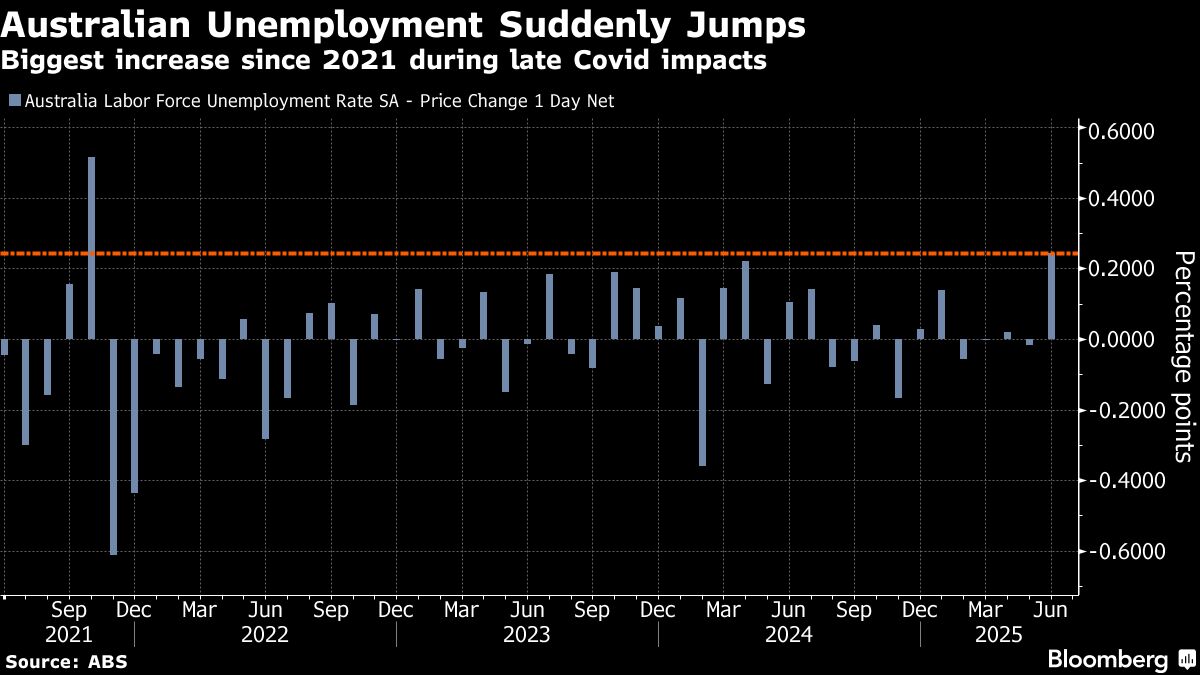
Australian unemployment unexpectedly climbed to a four-year high in June as hiring almost stalled, suggesting a loosening of the labor market and bolstering the case for the Reserve Bank of Australia to reduce interest rates next month.
The currency declined by more than a half percent as the jobless rate increased to 4.3 percent, the highest level since November 2021 and exceeding forecasts for an unchanged 4.1 percent, data from the Australian Bureau of Statistics showed Thursday. Employment rose by 2,000 driven entirely by part-time roles, against economists’ expectations of a 20,000 gain.
The yield on policy-sensitive three-year government bonds fell almost 10 basis points while stocks advanced. Money market bets firmed to fully price a cut in August and another after that, with a better than 50 percent chance of a third.
The data is crucial for RBA policymakers as the resilience of the labor market, and worries about it rekindling price pressures, have been key reasons why they’ve shown patience in the current easing cycle. The central bank has cut twice since the start of the year — shocking the market last week with a decision to hold at 3.85 percent — and today’s weak jobs report, following a subdued reading in May, could suggest a turn in fortunes.
“There is now a deeper question of whether we might be starting to see the labor market resume its gradual softening after this recent period of resiliency,” said Ryan Wells, an economist at Westpac Banking Corp. “The data strengthen the already-strong case to deliver the next rate cut in August.”
ALSO READ: Aussie treasurer says country 'well-placed' to avoid recession amid tariffs
The central bank’s board said after its shock pause at 3.85 percent that it wanted to wait for further evidence that inflation was sustainably hitting the midpoint of its 2-3 percent target. The quarterly CPI report due on July 30 is seen as the next major reading for the policy outlook.

Investors will be watching a speech by Governor Michele Bullock next Thursday and a fireside chat with her deputy, Andrew Hauser, a day after the inflation data for further clues. Economists also expect the RBA to downgrade its employment forecasts in August.
Australia’s economic momentum remains subdued with consumer confidence and household spending tepid. Global uncertainty is also elevated in the run-up to President Donald Trump’s tariff deadline on Aug 1.
Australian Treasurer Jim Chalmers, in a statement after the jobs data, pointed to the “inevitable consequence of economic uncertainty and volatility around the world and the ongoing impact of higher interest rates.”
The trade uncertainty is weighing on business investment and prompting firms to rethink hiring plans, economists said. Even though Australia got off lightly with a 10 percent baseline tariff rate, as an export-reliant economy its fortunes are heavily geared to those of its trading partners.
Chalmers, who is attending a Group of 20 meeting in South Africa, added that ongoing labor market resilience is one of Australia’s best defenses against volatile global conditions. “We are well‑placed and well‑prepared to face the challenges ahead,” he said.
Thursday’s jobs report also showed the annual employment growth was 2 percent versus an average of 3.4 percent between 2022 and 2024, with the participation rate rising to 67.1 percent.
Meanwhile, full-time roles dropped by 38,200 while part-time positions advanced by 40,200. Underemployment rose to 6 percent while under-utilization climbed to 10.3 percent.


